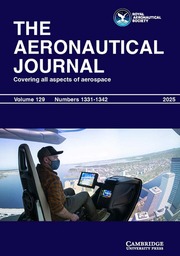No CrossRef data available.
Article contents
Control-oriented six-degree-of-freedom modeling of distributed propulsion vehicle
Published online by Cambridge University Press: 08 April 2025
Abstract
The dynamic model of the distributed propulsion vehicle faces significant challenges due to several factors. The primary difficulties arise from the strong coupling between multiple power units and aerodynamic rudder surfaces, the interaction between thrust and vehicle dynamics, and the complexity of the aerodynamic model, which includes high-dimensional and high-order variables. To address these challenges, wind tunnel tests are conducted to analyse the aerodynamic characteristics and identify variables affecting the aerodynamic coefficients. Subsequently, a deep neural network is employed to investigate the influence of the power system and aerodynamic rudder on the aerodynamic coefficients. Based on these findings, a multi-dynamic coupled aerodynamic model is developed. Furthermore, a control-oriented nonlinear dynamics model for the distributed propulsion vehicle is established, and a flight controller is designed. Finally, closed-loop simulations for the climb, descent and turn phases are performed, validating the effectiveness of the established model.
Information
- Type
- Research Article
- Information
- Copyright
- © The Author(s), 2025. Published by Cambridge University Press on behalf of Royal Aeronautical Society


